I’ve spent over 10 years in ecommerce — launching stores, scaling brands, and testing platforms.
I’ve used both Shopify and Square Online across different industries and business models, so I know exactly where each one shines — and where it struggles.
Both platforms let you sell online, but they’re built for very different types of sellers. So if you’re weighing up Shopify vs Square Online, and not sure which one actually fits your business, this guide will help.
Just like we did for Shopify vs BigCommerce, we’ll compare these platforms based on the most important areas: pricing, features, marketing, SEO, ease of use, templates, support, and more.
Let’s break it down.
Shopify vs Square Online: Quick Verdict
Shopify – Best overall if you’re building a real brand and want to scale across multiple channels.
Square Online – Best if you want something quick, simple, and low-cost — especially if you’re already using Square’s POS in-store.
We’ll dive into all the key differences below, but here’s the TL;DR:
- go with Square if you’re just getting started and don’t need much
- go with Shopify if you’re serious about growing a long-term ecommerce business
Quick Comparison: Shopify vs Square Online
| Feature | Shopify | Square Online |
|---|---|---|
| Overall Rating | ⭐ 4.8 | ⭐ 4.1 |
| Starting Price | $5/month | Free |
| Transaction Fees | 2% unless using Shopify Payments | 2.9% + 30p per sale |
| Free Plan | No | Yes |
| Templates | 180+ | 1 main theme with layout tweaks |
| App Store | 8,000+ apps | Limited |
| POS System | Built-in, requires extra hardware | Native POS integration |
| SEO Tools | Advanced | Basic |
| Support | 24/7 chat, docs, forums | Live chat + phone (limited hours) |
Best for Pricing: Square Online Wins on Cost
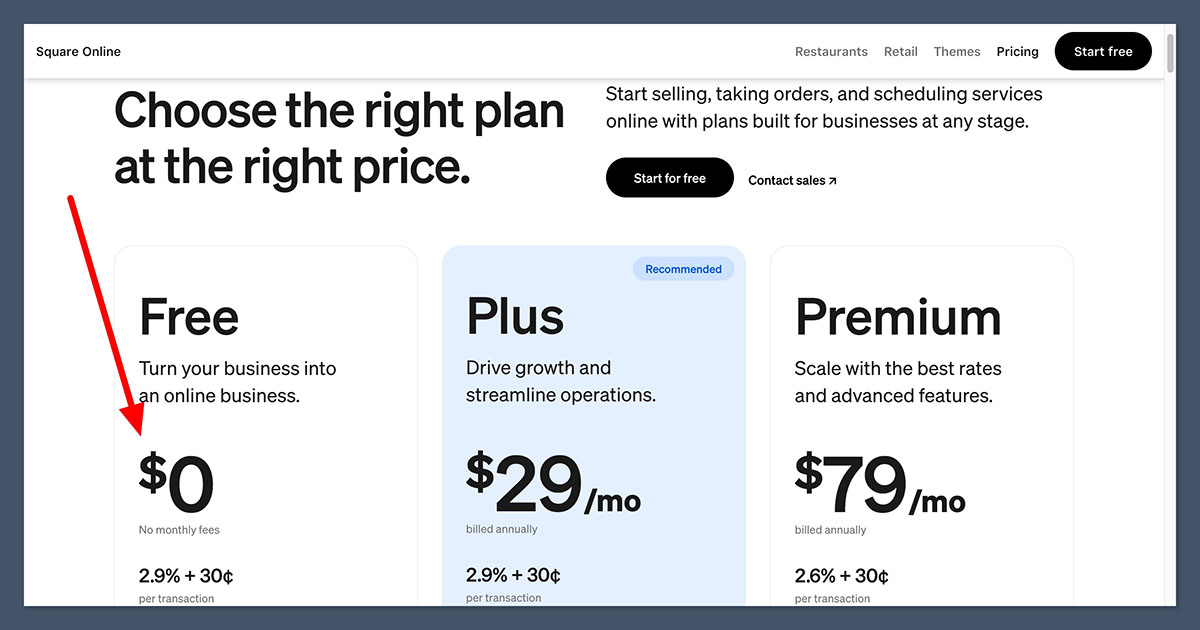
If your priority is keeping costs low while you test the waters, Square Online wins. The platform offers a completely free plan, and that’s hard to argue with.
Square Online Pricing:
- Free Plan: $0/month (includes branding + limited features)
- Plus: $29/month
- Premium: $79/month
Square charges 2.9% + 30p per transaction, which is slightly higher than Shopify, but there are no monthly fees if you stay on the free plan.
You’ll start paying more if you want to remove branding or unlock better features like abandoned cart emails and product reviews.
Shopify Pricing (billed annually):
- Basic: $29/month
- Shopify: $79/month
- Advanced: $299/month
Shopify also charges 2% transaction fees unless you use Shopify Payments.
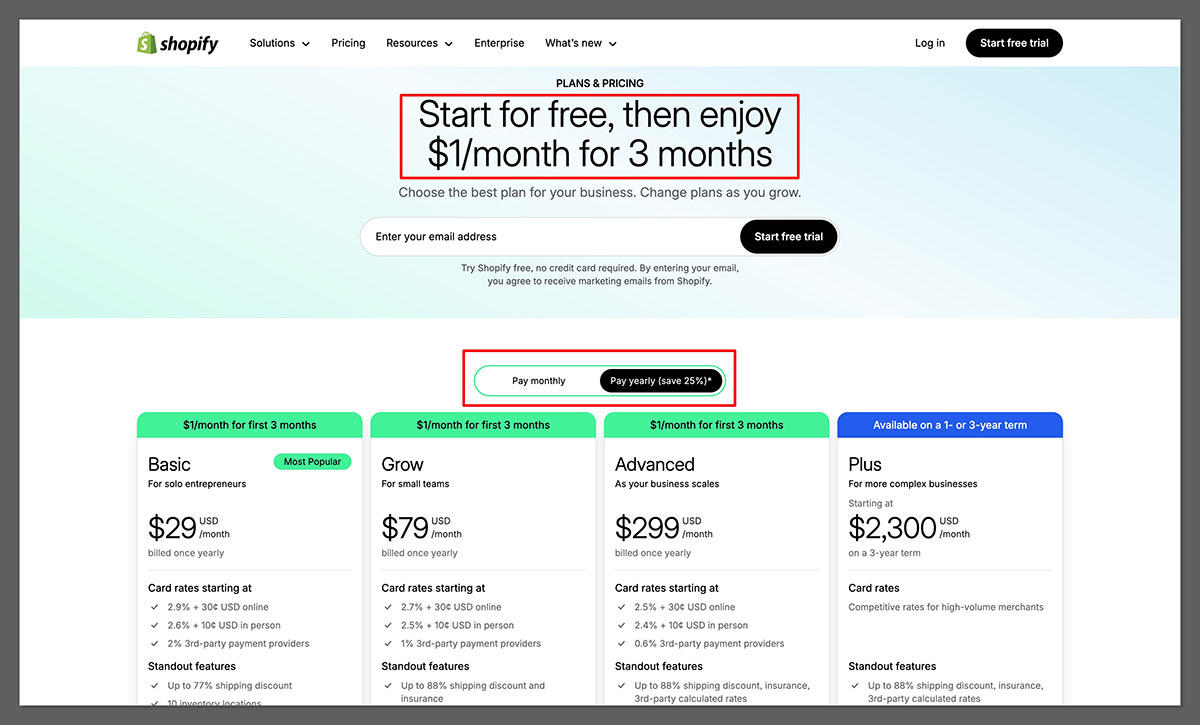
You can try it free for three days and then pay just $1/month for the first three months, which makes it more accessible to test short-term — but once you’re in, the monthly costs add up.
That said, Shopify does offer a lesser-known plan called Shopify Starter, which is perfect for creators or side hustlers who just want to sell via a link or social media — without building a full store.
It costs just $5/month, and lets you create product links, accept payments, and manage simple orders. It doesn’t include a full website builder, but it’s a great stepping stone between free tools and full ecommerce.
I’ve had clients burn cash fast on apps, themes, and extras they didn’t realise they needed with Shopify. Meanwhile, I’ve seen solo founders run lean, profitable shops for months using just Square’s free tier.
The Winner
Square Online is cheaper upfront.
If budget is your main concern, or you want to sell without committing to monthly costs, Square Online is the better value.
But if you’re planning to scale, Shopify offers more long-term power — and justifies its higher price.
Best for Selling Online: Shopify Offers More Sales Features
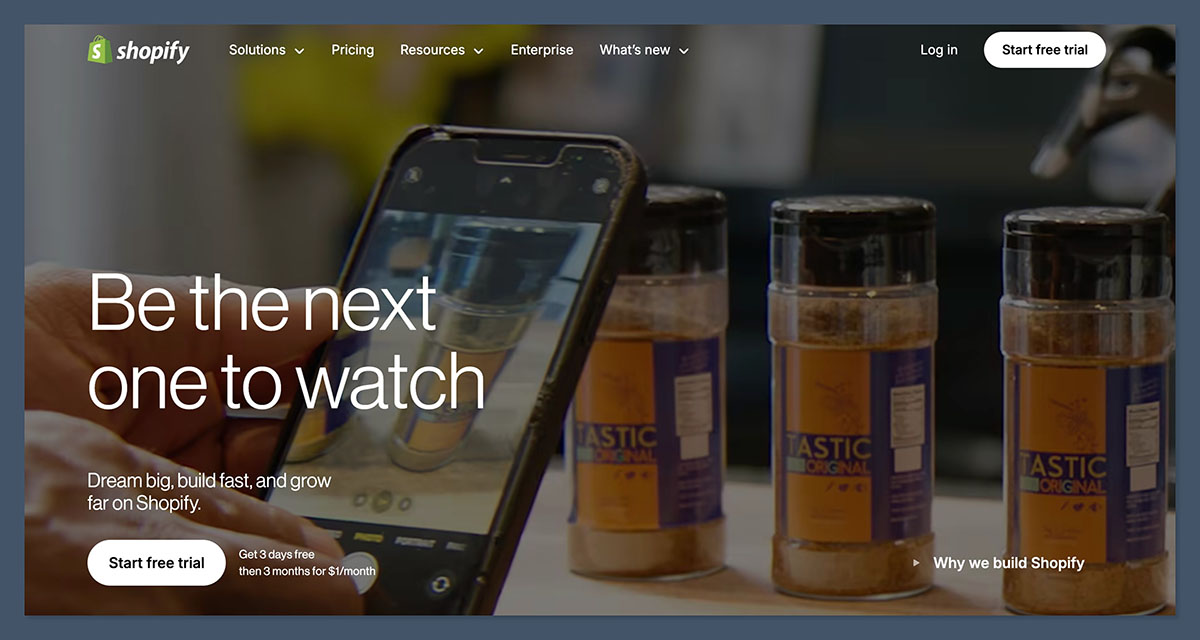
Shopify and Square Online both let you sell products online, manage orders, and accept payments. But the deeper you go, the more Shopify starts to pull ahead.
Sales Features:
Square Online covers the basics well. You can list unlimited products, set up local pickup or delivery, and manage inventory.
Features like gift cards, discount codes, and even some SEO settings are available on paid plans.
But Shopify goes much further. You get tools like:
- Abandoned cart recovery (included on all paid plans)
- Advanced discount rules
- Multiple inventory locations
- Product bundling (with apps)
- Built-in automation features
- Subscriptions (with apps)
- International shipping, taxes, and multi-currency support
For example, I had a client running a fashion brand with hundreds of SKUs. Shopify’s stock management tools, combined with integrations for suppliers, helped automate reorders and avoid overselling.
That setup just wouldn’t be possible on Square.
Another major difference is how each platform handles multichannel selling. Shopify integrates natively with Amazon, TikTok, Facebook, and Instagram. It also offers a marketplace sync tool for Etsy and eBay.
Square offers some integrations, but they’re limited in comparison.
The Winner
Shopify gives you more advanced ecommerce tools.
If you want more control, flexibility, and room to grow your product line or sales channels, Shopify is the stronger choice.
Best for Payments: Shopify Gives You More Options
Both Shopify and Square make it easy to accept payments — but they approach it differently.
Square Online only uses Square Payments, which means it’s simple to set up and fully integrated with their POS. You don’t get much say in who processes your payments, but the trade-off is convenience. Fees are 2.9% + 30p per transaction.
Shopify, on the other hand, gives you over 100 payment gateways, including:
- Shopify Payments (with reduced fees)
- PayPal
- Apple Pay and Google Pay
- Klarna and Afterpay
- Cryptocurrency (via apps)
Using Shopify Payments drops transaction fees from 2% to 0.5% (on Advanced), which can save a lot at scale.
In my experience, Square is great for simplicity — especially for in-person businesses already using their POS.
But if you need flexibility — for subscriptions, B2B, or global currencies — Shopify is hard to beat.
The Winner
Shopify offers more flexibility.
But if you want the fastest setup with fewer moving parts, Square is easier out of the box.
Best for Marketing and SEO: Shopify Is Built to Grow
Marketing tools are where Shopify really shines — especially when it comes to selling on social media and optimising for Google.
Shopify’s marketing toolkit includes:
- Native email campaigns (Shopify Email)
- Automated workflows (with Flow app)
- Integration with TikTok, Instagram, Facebook
- SEO settings for every product/page
- Blog engine for content marketing
- Third-party marketing apps (Klaviyo, Omnisend, etc.)
You also get the Shopify Marketplace Connect app — making it easy to sync products across Amazon, Etsy, and eBay.
Square Online does offer basic marketing options:
- Email campaigns (through Square Marketing, at extra cost)
- Promotional banners
- Social media buttons
- Discount codes
But it lacks built-in advanced features. For email marketing or social selling, you’ll need third-party add-ons.
And in my testing, the SEO tools are basic — you can update page titles, descriptions, and alt text, but there’s limited control over URL structures and no built-in blog.
If ranking on Google or running full marketing funnels is part of your plan, Square will feel restrictive very quickly.
The Winner
Shopify has better tools for growth.
From SEO to email to social selling — if marketing is important, Shopify gives you the tools to win.
Best for Design and Templates: Shopify Looks More Professional
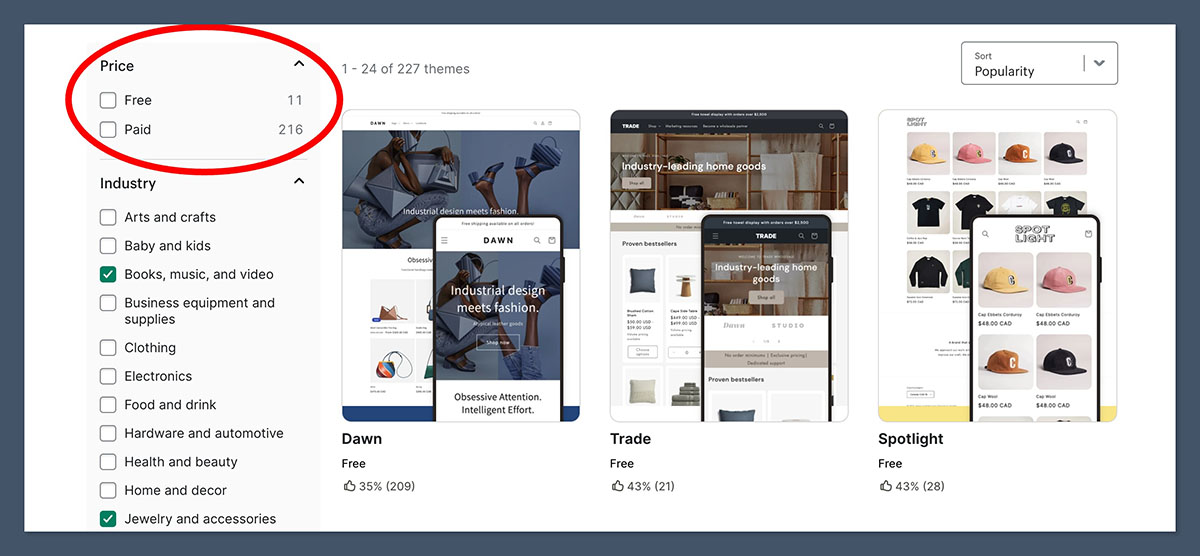
When it comes to design, your storefront sets the tone. Square Online is functional — but Shopify stores look like brands.
Shopify offers:
- 13 free themes, 170+ premium options (£100–£300)
- Full access to theme code (HTML, CSS, Liquid)
- Built-in customiser with drag-and-drop sections
- Modern, mobile-optimised templates
Square Online offers:
- One default theme with layout variations
- Basic customisation options
- No theme code access
The difference is clear. I’ve worked on Shopify stores that felt like full custom builds, without touching code.
With Square, you’re limited to changing fonts, colours, and layout blocks — but can’t build a truly unique experience.
The Winner
Shopify is better for branding and design.
If you want your store to look and feel premium, Shopify is the clear choice.
Best for POS and In-Person Sales: Square Online Wins
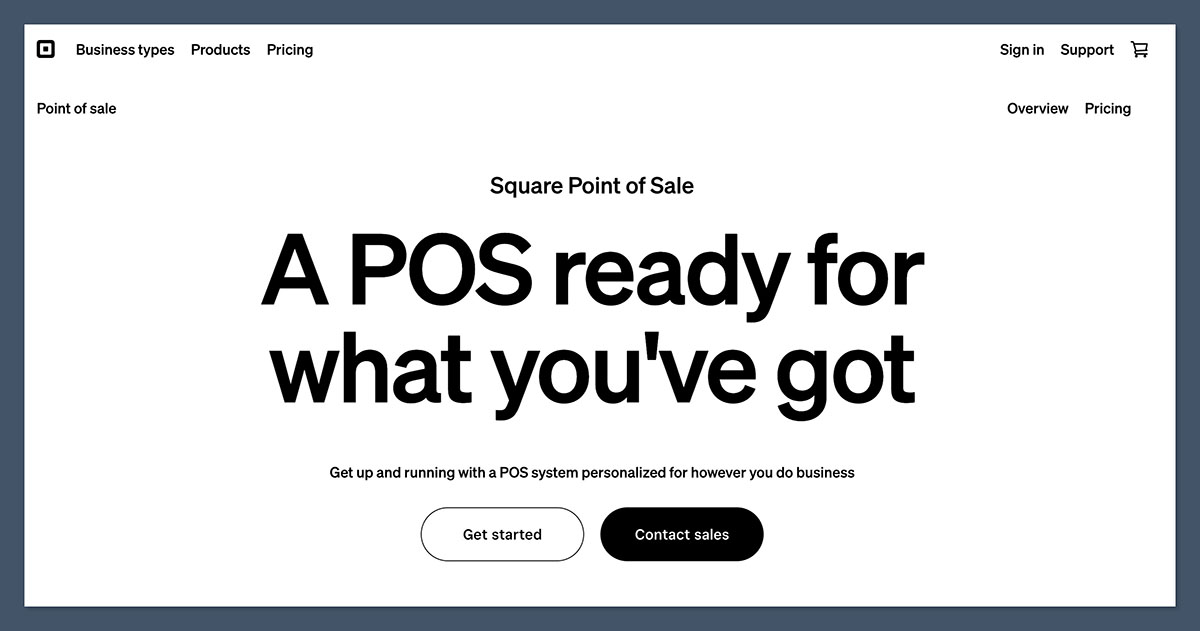
This is the one area where Square has a clear edge — and if you’re selling in person, it could be a game-changer.
Square Online is built to work with Square POS, their point-of-sale system that powers millions of physical businesses. Everything syncs — inventory, customer data, order history.
You can:
- Accept chip + PIN, contactless, or mobile payments
- Manage orders from the same dashboard
- Use their free POS app on a phone or tablet
Shopify also has POS hardware and software. But it costs extra (£69/month for POS Pro), and the integration takes more setup. It works well, but it’s not as seamless — especially if you already use Square in-store.
The Winner
Square Online is the better choice for physical shops.
If you sell at a retail location, market, or pop-up, Square’s built-in POS ecosystem makes life easier.
Easiest to Use: Square Online Is Faster to Start, Shopify Is Better Long-Term
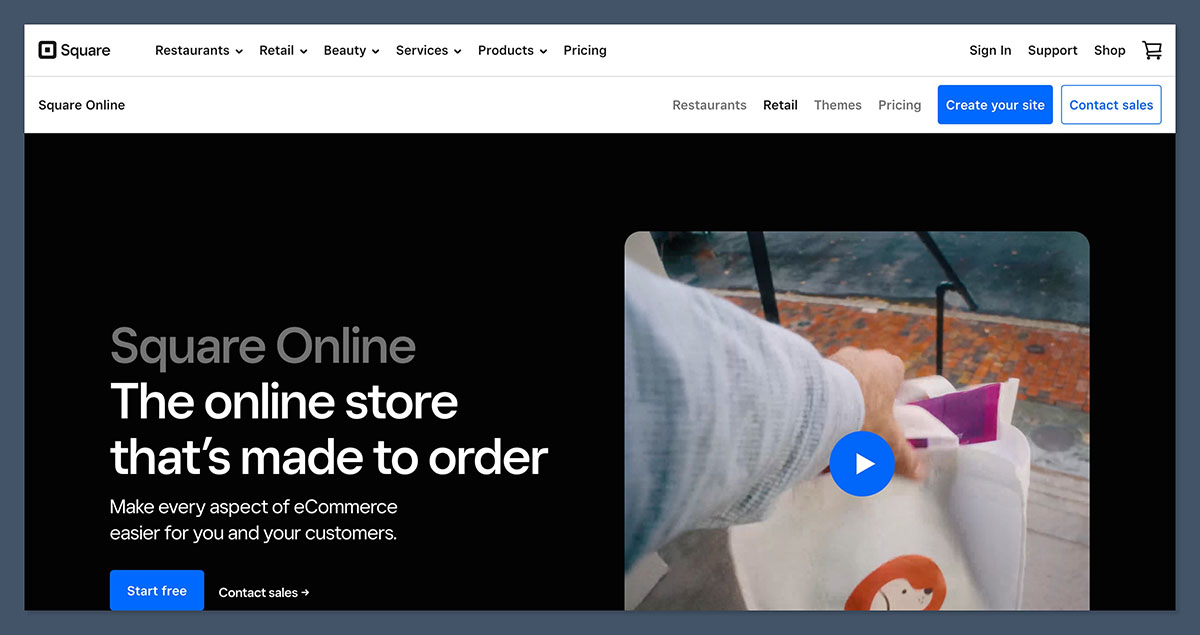
Getting started on both platforms is straightforward, but Square is faster. You can launch a store in under 30 minutes — and I’ve seen clients go from zero to live store in a single afternoon.
Square Online Pros:
- Fast onboarding
- Clean, simple interface
- Great for beginners
- Minimal setup steps
Shopify Pros:
- Step-by-step setup checklist
- Guided onboarding
- More powerful — but more to learn
With Shopify, there’s a small learning curve. But once you’re up and running, it’s smooth. And the depth of the platform means you won’t outgrow it as fast.
I often recommend Square to people with one or two products, or those who’ve never touched ecommerce before. But for anything beyond that, Shopify’s control is worth the time investment.
The Winner
Square Online is easier out of the gate.
But Shopify is more user-friendly once you scale up your store.
Best Customer Support: Shopify Has a Bigger Support System
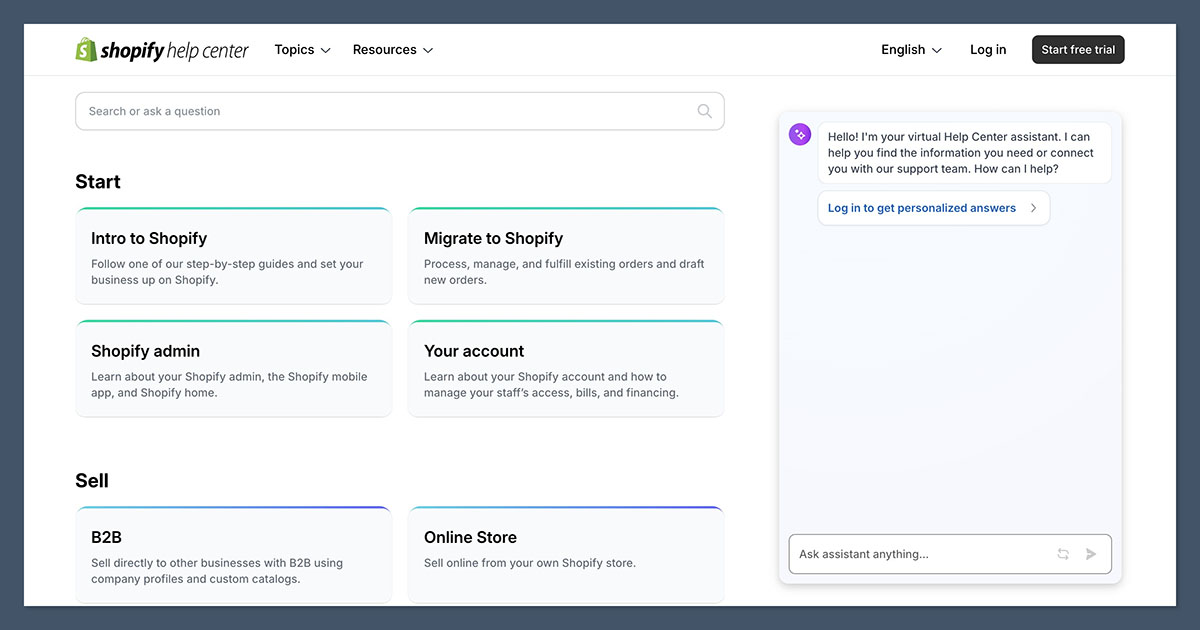
Support can make or break your experience — especially when something breaks during a sale.
Shopify Support:
- 24/7 live chat, phone, and email (depending on plan)
- Huge knowledge base
- Active forums and Facebook groups
- Priority support on Shopify Plus
Square Online Support:
- Phone and live chat (limited hours)
- Help docs and community forums
- Fewer third-party resources
Shopify’s support ecosystem is simply larger. I’ve solved issues via chat in minutes — and when that didn’t work, there were hundreds of YouTube tutorials and blog posts to guide me.
With Square, I’ve had slower responses and fewer how-to resources — especially for more advanced topics.
The Winner
Shopify provides better, faster, more scalable support.
Final Verdict: Should You Choose Shopify or Square Online?
Here’s my take, after building and testing stores on both platforms:
| Go with Square Online if you: |
|---|
| Want a free store to get started quickly |
| Sell primarily in person using Square POS |
| Only need basic ecommerce tools |
| Want the fastest, cheapest route online |
| Go with Shopify if you: |
|---|
| Plan to scale and grow a real brand |
| Want more advanced tools and flexibility |
| Care about SEO, multichannel selling, and automation |
| Need full control over your store’s design and features |
My recommendation?
If you’re serious about ecommerce, go with Shopify. It’s more powerful, more flexible, and better built for growth.






